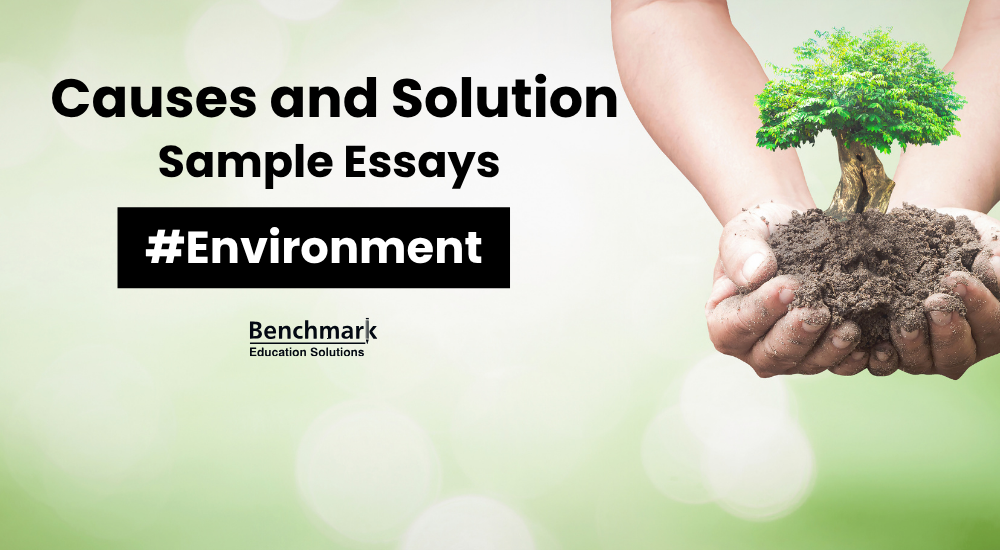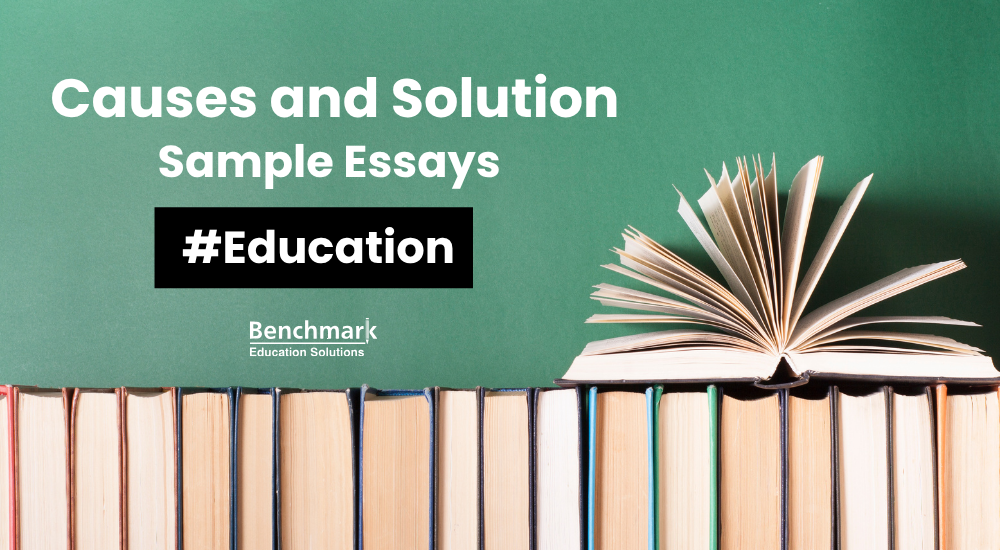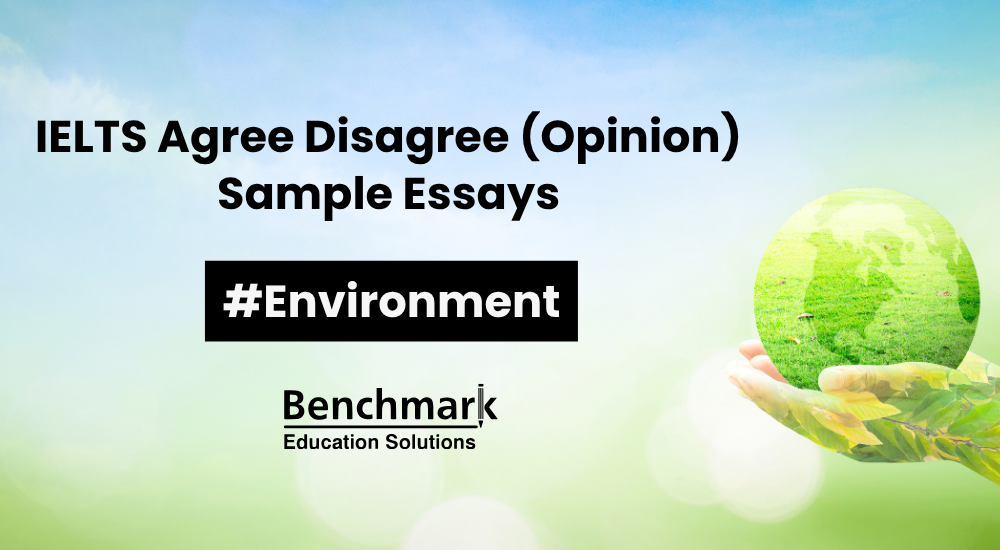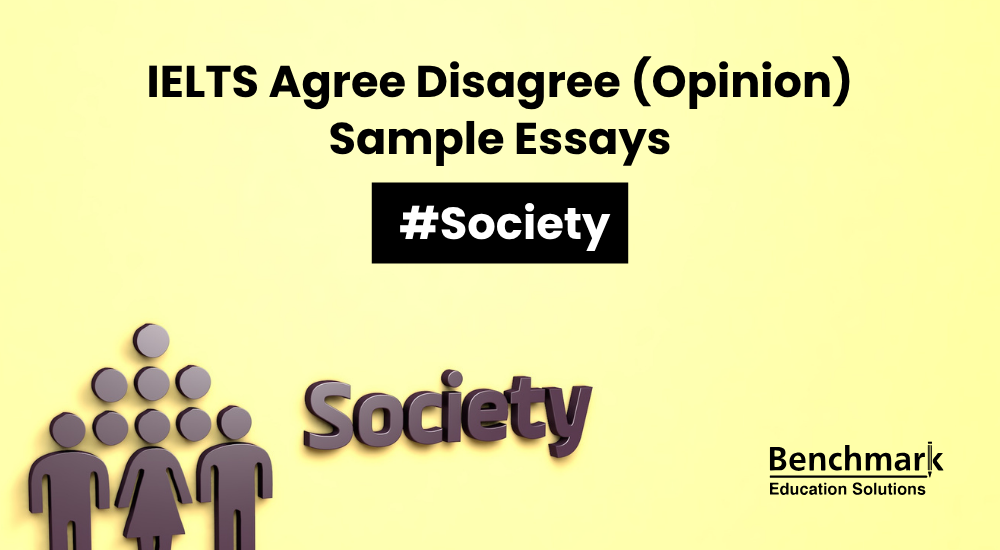IELTS Causes and Solution Essay: Environment Topics with Sample Answers
- 0 Comments


In the Academic IELTS Writing section, environment-related essay topics often focus on global environmental issues and sustainable solutions. Common subtopics might include: the impact of climate change, the role of renewable energy, deforestation and its effects, the importance of wildlife conservation, pollution and its control, and the responsibility of governments versus individuals in protecting the environment. Find useful IELTS vocabulary on the environment here.Use Benchmark IELTS Writing Correction service to write error-free IELTS Essays, Letters & Reports.
Essay Topics
Task
Many species of animals and plants are in danger of becoming extinct. What are the causes of this problem, and what can be done to prevent it from happening?
How to approach the essay:
How to Approach the Essay:
- Understand the Task:
Explain why species are becoming extinct and how to stop it.
| Causes of Species Extinction | Proposed Solutions to Prevent Extinction |
|---|---|
| • Deforestation from agriculture and livestock farming • Pollution from agrochemicals contaminates ecosystems • Greenhouse gas emissions accelerate global warming and damage ecosystems (e.g., coral bleaching in Australia) | • Enforce laws against deforestation and pollution • Promote renewable energy and penalize toxic emissions • Introduce environmental education to raise awareness (e.g., Germany, Switzerland) |
- Body Paragraph 1 – Causes:
Focus on human actions: deforestation, pollution, agrochemicals.
Include climate change from greenhouse gases.
Use examples like livestock farming and Great Barrier Reef damage. - Body Paragraph 2 – Solutions:
Suggest government measures: laws, penalties, clean energy.
Promote education and public awareness.
Give examples like Amazon reforestation and EU green policies. - Structure Tip:
Intro → Causes → Solutions → Conclusion.
Keep points clear and backed by examples.
Model Answer
Many species of animals and plants are currently on the brink of extinction because of human activities and climate change. Enforcing stricter regulations and raising environmental awareness could greatly reduce the loss of countless species.
The harmful effects of human activity on the environment are evident through pollution and deforestation. Agricultural practices and livestock farming in particular are responsible for a substantial portion of global deforestation. The pervasive use of agrochemicals continues to contaminate soil, rivers, and underground water reserves. Consequently, various tree species are disappearing, soil erosion is exacerbated, and many animals perish due to habitat destruction and pollution. The emission of greenhouse gases from vehicles and industrial processes further worsens climate change. For instance, the rapidly rising ocean temperatures observed over the past century in Australia have severely impacted the Great Barrier Reef. Coral reefs and other marine organisms are vanishing due to bleaching, a process closely linked to global warming.
To prevent the extinction of flora and fauna, stringent laws must be enacted. Measures to curb deforestation, promote renewable energy, and penalize the use of toxic substances and emissions should be implemented. Since the prohibition of logging in the Amazon rainforest in the 1980s, the largest tropical forest in the world has shown signs of recovery, regaining approximately 15% of its original greenery. Another measure to prevent the loss of endangered species is the implementation of environmental education. Countries in Europe, such as Germany and Switzerland, which have introduced such programs over the past two decades, are already seeing encouraging changes in environmental awareness.
In conclusion, humanity poses the greatest threat to the survival of animal and plant species. However, by strengthening regulations and promoting environmental education, we can take significant steps toward preventing the extinction of endangered species.
Essay Questions
Many species of animals and plants are in danger of becoming extinct. What are the causes of this problem, and what can be done to prevent it?
Introduction
Clarity:
• Yes, the issue is introduced clearly and directly.
Thesis:
• Writer presents a clear stance with a preview of both causes and solutions.
Body Paragraphs
Main Ideas (Causes):
• Pollution and deforestation
• Farming and agrochemical use
• Climate change (emissions, coral bleaching example)
Main Ideas (Solutions):
• Stricter environmental laws
• Renewable energy promotion
• Environmental education (EU examples, Amazon recovery)
Coherence:
• Logical flow of ideas
• Smooth transitions between causes and solutions
• Balanced paragraph development
Conclusion
Summary:
• Effectively restates the main threat (human activity)
• Reinforces proposed solutions (laws + education)
Vocabulary & Grammar
High-Level Vocabulary:
• On the brink of extinction – very close to disappearing
• Agrochemicals – chemicals used in farming
• Exacerbated – made worse
• Stringent – strict or severe
• Bleaching – loss of color in coral due to stress, often heat-related
Academic Phrases:
• “The harmful effects of human activity…”
• “To prevent the extinction of flora and fauna…”
• “Countries…are already seeing encouraging changes…”
Complex Sentences:
• “The emission of greenhouse gases from vehicles and industrial processes further worsens climate change.”
• “Countries in Europe, such as Germany and Switzerland, which have introduced such programs over the past two decades, are already seeing encouraging changes in environmental awareness.”
Task
In today’s world, some people argue that modern society has become excessively wasteful, characterized by widespread use of disposable items such as plastic bags and an increasing amount of litter. What are the main causes of this trend, and what solutions can be implemented to address it?
How to approach the essay:
- Understand the Question:
- The question asks for causes of excessive waste and solutions to tackle it.
| Causes of Rising Waste | Proposed Solutions to Reduce Waste |
|---|---|
| • Industrialization and economic growth increase non-recyclable waste • Poor recycling practices, especially in developing countries • Lack of knowledge about the importance of reduce-reuse-recycle | • Raise public awareness and promote individual responsibility (e.g., Sweden’s 99% recycling rate) • Enforce strict environmental laws (e.g., Rwanda’s plastic bag ban and fines) • Promote national-level action and stronger business accountability |
- Body Paragraph 1 – Causes:
- Discuss economic development leading to more disposable goods.
- Highlight poor recycling and industrial waste (plastics, non-recyclables).
- Mention issues in developing countries with poor waste management.
- Body Paragraph 2 – Solutions:
- Suggest raising awareness (e.g., Sweden’s recycling system).
- Recommend government action: stricter laws and penalties (e.g., Rwanda’s plastic ban).
- Emphasize the impact of collective efforts.
- Structure Reminder:
Introduction → Causes → Solutions → Conclusion.
Focus on clarity with clear examples.
Model AnswerAlthough significant progress has been made in societal development, this has been accompanied by a sharp rise in waste production. This essay will examine the root causes of this critical issue and suggest practical solutions to reduce the growing volume of garbage.
The main reasons behind the rise in waste production are social and economic development, coupled with inadequate recycling practices. Many businesses are major contributors to industrial waste, which includes heavy metals, plastics, and other durable, non-recyclable materials. Moreover, there is a widespread lack of understanding about the importance of reducing, reusing, and recycling waste. This issue is particularly noticeable in developing countries, where a substantial proportion of waste is either landfilled or incinerated rather than repurposed. Although some may believe that individual recycling efforts have minimal impact, collective action at the national level can indeed yield significant results.
To reduce waste generation, raising public awareness and encouraging individual responsibility are crucial. For example, in Sweden, citizens actively sort their waste for recycling, contributing to the country’s high recycling rate of over 99%. This approach demonstrates how public awareness can lead to significant reductions in waste. Additionally, governments should enforce strict environmental regulations in underdeveloped countries where there are no existing waste management laws. A successful example can be seen in Rwanda, where the government implemented a plastic bag ban and imposed fines, leading to a significant reduction in plastic waste.
In conclusion, waste disposal is worsened by limited recycling efforts and industrialization. Solving this issue requires both individual action and a strong commitment from businesses to reduce waste. Only through a combined effort can we significantly curb this growing problem and move towards a more sustainable future.
Essay Question:
In today’s world, some people argue that modern society has become excessively wasteful, characterized by widespread use of disposable items such as plastic bags and an increasing amount of litter. What are the main causes of this trend, and what solutions can be implemented to address it?
Introduction
Clarity:
• The topic is clearly introduced, highlighting societal progress and the rise in waste production.
Thesis:
• The writer outlines the main issue (waste production) and previews the essay’s focus on causes and solutions. Clear stance is present.
Body Paragraphs
Main Ideas (Causes):
• Social and economic development: Leads to more disposable products.
• Inadequate recycling: A major contributor to increased waste.
• Industrial waste: Includes non-recyclable materials like plastics and metals.
• Lack of awareness: Many people don’t understand the importance of waste reduction.
• Developing countries: Waste is often landfilled or incinerated rather than recycled.
Main Ideas (Solutions):
• Raising awareness: Encouraging individual responsibility for waste reduction.
• Example of Sweden: High recycling rates due to public awareness.
• Strict regulations: Governments should enforce laws, as shown by Rwanda’s plastic bag ban.
Coherence:
• The essay is logically organized with smooth transitions between causes and solutions. Both sides (causes and solutions) are well-balanced.
Conclusion
Summary:
• The conclusion effectively restates the main problems (limited recycling, industrialization) and solutions (individual action, business commitment).
Vocabulary & Grammar
High-Level Vocabulary:
• Industrial waste – waste produced by industries, often non-recyclable
• Repurposed – reused for a different purpose
• Inadequate – insufficient or not enough
• Collective action – efforts taken by a group or community
• Incinerated – burned at high temperatures, often for disposal
• Academic Phrases:
• “The main reasons behind…”
• “To reduce waste generation…”
• “A successful example can be seen in…”
Complex Sentences:
• “Although some may believe that individual recycling efforts have minimal impact, collective action at the national level can indeed yield significant results.”
• “This issue is particularly noticeable in developing countries, where a substantial proportion of waste is either landfilled or incinerated rather than repurposed.”
More Articles
IELTS Causes and Solution Essay: Education Topics with Sample Answers
In the Academic IELTS Writing section, education-related essay topics often focus on various aspects of the learning process and educational
IELTS Causes and Solution Essay: Culture Topics with Sample Answers
Culture-related essay topics are frequently seen in the IELTS Academic Writing Task 2 and often focus on the interaction between
Environment in IELTS Writing Task 2: Agree or Disagree Essay Samples
In the Academic IELTS Writing Task 2, environment-related essay topics are quite common and often focus on global challenges and
Crime and Security in IELTS Writing Task 2: Agree or Disagree Essay Samples
Crime and security are common themes in IELTS Academic Writing Task 2, often focusing on how societies address criminal behavior
IELTS Agree or Disagree Essay: Society Topics with Sample Answers
IELTS Writing Task 2 often features society-related topics that require students to express opinions on modern social trends and challenges.









